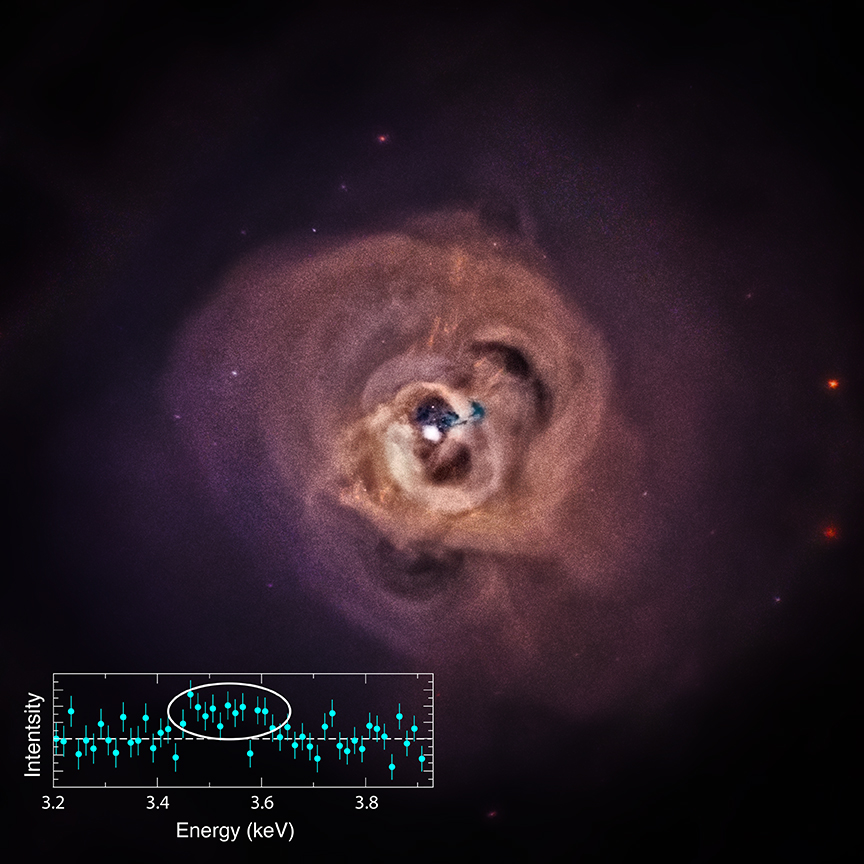
 Credit: X-ray: NASA/CXC/SAO/E.Bulbul, et al.
Credit: X-ray: NASA/CXC/SAO/E.Bulbul, et al.
Dark Matter Bump in the Night?
X-ray telescopes like the Chandra X-ray Telescope not only take exquisite X-ray images of cosmic objects, like the image of the Perseus cluster of galaxies above, but also measure the energy of the emitted X-rays. The X-ray spectrum, i.e. the distribution of X-rays with energy, is a vital clue to the source of the emission. Electrons spiralling around magnetic fields, particles of hot gas bumping into each other, bound electrons in heavy elements jumping from one orbit to another around the atomic nucleus, all have their distinctive signatures. A new study of over 70 clusters of galaxies using Chandra and the XMM-Newton X-ray telescope has uncovered something strange and unexpected: a bump of emission at an X-ray energy where there should be no bump. A representative bump from the Perseus cluster is shown in the inset above, highlighted by the white oval. Astronomers are not sure what this strange bump might mean. It's possible that the bump is an instrumental artifact, though this is unlikely since the feature is seen by both Chandra and XMM-Newton. An exciting possibility is that the feature might arise from the decay of dark matter particles called sterile neutrinos.
Published: June 30, 2014
<
HEA Dictionary ● Archive
● Search HEAPOW
● Other Languages
● HEAPOW on Facebook
● Download all Images
● Education ● HEAD
>

Each week the HEASARC
brings you new, exciting and beautiful images from X-ray and Gamma ray
astronomy. Check back each week and be sure to check out the HEAPOW archive!
Page Author: Dr. Michael F. Corcoran
Last modified Monday, 26-Feb-2024 17:35:55 EST


